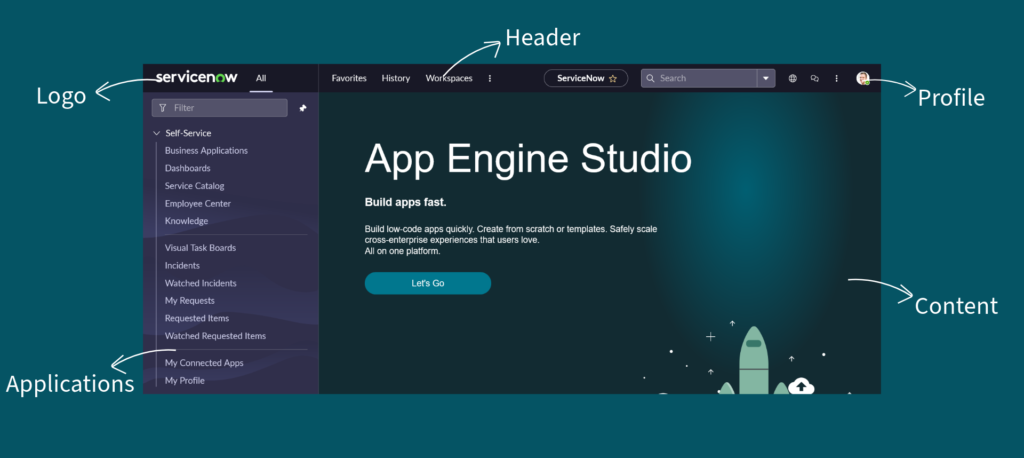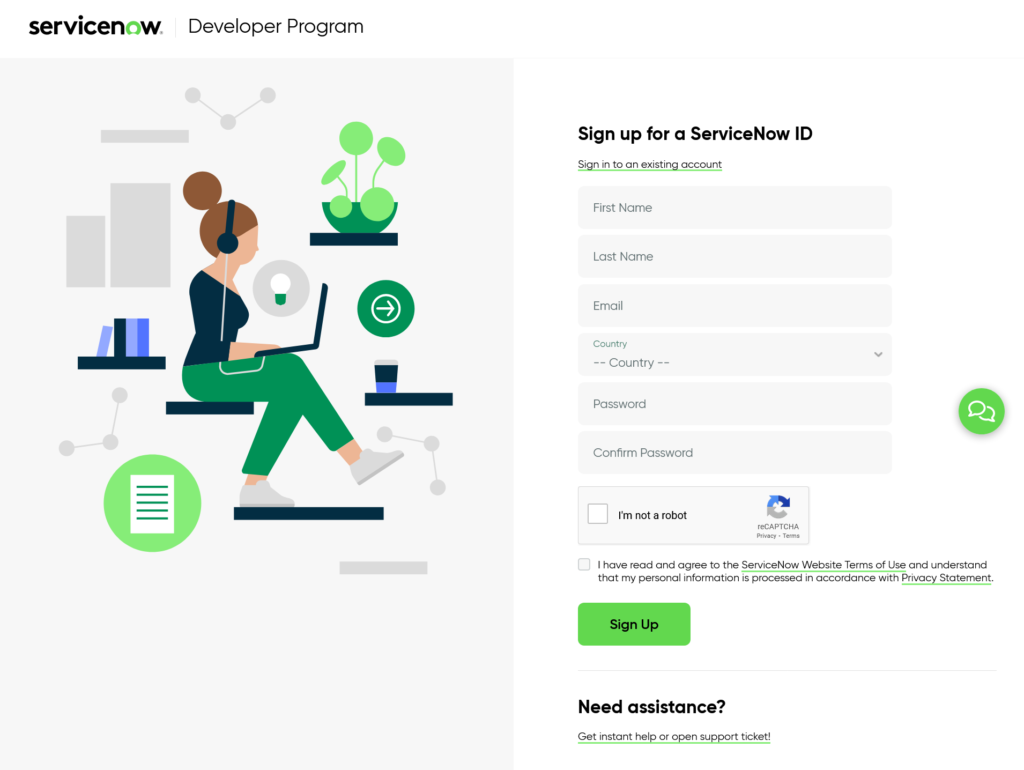Hello Readers, today we will start our journey on ServiceNow from a beginner’s perspective. I will take you through the overview of ServiceNow and then dive through the development cycle and the most prominently required chunks of ServiceNow. ServiceNow as a whole has grown in many ways through the past years. It keeps on adding a new feature or a new module every quarter. Keeping in mind the vast scope we will target the core technicalities of it using a real-life scenario.
Let’s get started…
What is ServiceNow?
ServiceNow (ServiceNow) is a SaaS (software as a service) platform that helps people develop and use complex applications under one roof. It is built on Java and uses a Javascript engine. ServiceNow is primarily built to provide developers a Low-Code – No-Code platform to build applications on it but it is good if a person has Javascript knowledge for building applications in ServiceNow. Let’s see the home page of ServiceNow and understand the basics.

Here you see the homepage of how a ServiceNow application looks. Marked with numbers are the names of the sections available on the page.
- Logo – This is the company logo which the employees will see on logging in
- Header – This section holds the important links to traverse through the instance
- Profile – Logged in user’s name and icon
- Content – This section will hold the actual content we see while using the application (Form, List, Dashboard, etc..)
- Applications – List of all the applications available to the user
ServiceNow uses a multitenant architecture for data isolation and each customer has its own unique domain name which helps in identifying the data source. This Unique domain per customer thing is called an instance. Each instance starts with a subdomain and ends with a domain.
For e.g.
subdomain domain
dev191153.service-now.com - [dev191153].[service-now].com
The subdomain dev191153, here specifies the unique customer and the database it refers to, thus providing data isolation. ServiceNow provides developers a free-to-use instance for learning. The developers can use the instance to learn and practice the development.
How to request a Developer instance?

- Visit the Developer portal.
- Signup to the portal by clicking on
SignUp and Start Building. - Once SignUp is complete request an instance. Use the latest version (currently Washington). (Usually the name of the city, in alphabetical order)
- You will get an instance in a few minutes along with the password.
- Reset the password and start using the instance.
Key modules in ServiceNow
ServiceNow has many applications available for use. Out of which, below are the key modules where ServiceNow began its journey from
- ITSM (IT service management) – This is a legacy application to handle IT tickets for the company including Incident, Problem, Change
- Knowledge Base – This module can be used to share company-based knowledge among the employees of the company.
- Service Catalogue – This module is for the employees to request some service in the organization. Request a Laptop and mouse, Apply for leave, etc…
This set of modules grew with time and provided more and more functionalities to the customers. A few of them are Service Portal, Discovery, HRSD, Performance Analytics, etc.. broadly categorized under ITSM (IT Service Management), ITOM (IT Operations Management), ITBM (IT Business Management).
How will we approach the learning?
All the ServiceNow modules work on a standard set of chunks. These are the bits and pieces that work together to get the application running. We will tackle these bits in detail one by one in the upcoming posts. These topics will get you the core base of ServiceNow functionality and how different applications run from core. We will tackle a real-life scenario taking you through the building blocks of ServiceNow making you confident on the platform.
Conclusion
Today we have covered the very basic understanding of the ServiceNow platform, what it is and what it holds. We also named the key modules in ServiceNow. In the further posts I will bring you more details and a step-by-step approach to learning and getting a hold of the ServiceNow platform.
Stick to the blog and become an expert…

Pingback: Building Blocks of ServiceNow: A Developer's Perspective - Blog